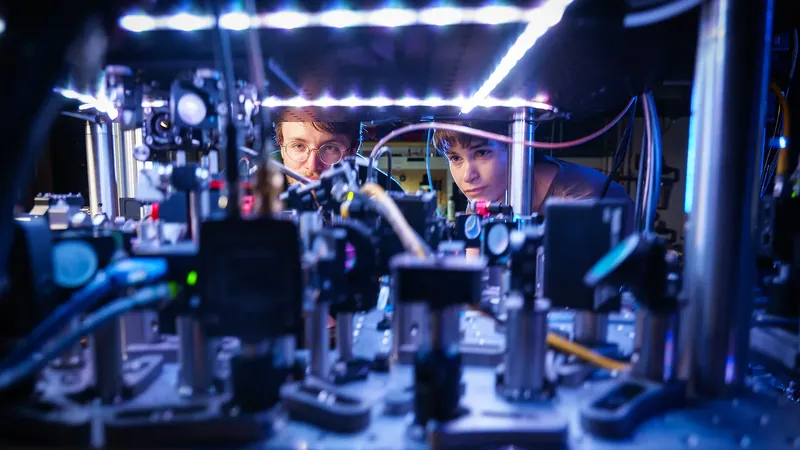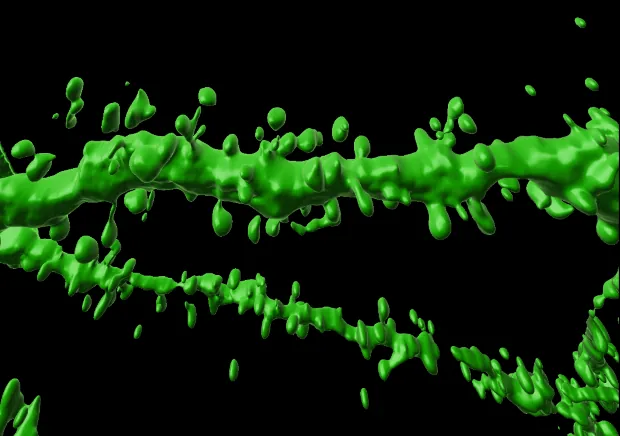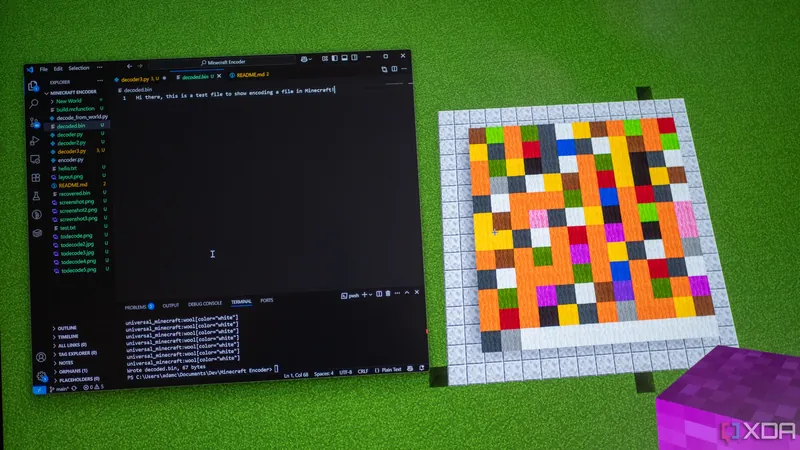
Revolutionary Quantum Sensor Tracks 3D Movement Without GPS!
2025-06-14
Author: Wei
A Game-Changer in Navigation Technology
Imagine navigating underwater or in outer space without relying on traditional GPS—thanks to a groundbreaking quantum sensor, this could soon become a reality! Developed by researchers at CU Boulder, this innovative device utilizes an advanced atom interferometer to track 3D movement with unprecedented precision.
The Science Behind the Sensor
Kendall Mehling, a co-author of the breakthrough study, explains that traditional atom interferometers only measure acceleration in a single dimension. "To know where I’m going and where I’ve been, I need to track acceleration in all three dimensions," Mehling stated. The team, comprising physicists from CU Boulder and the National Institute of Standards and Technology (NIST), published their findings in the journal *Science Advances* this month.
A Generous Boost from NASA
In a significant endorsement of their work, NASA awarded the CU Boulder team a whopping $5.5 million grant through its Quantum Pathways Institute, paving the way for further advancements in this revolutionary sensor technology.
How It Works: The Engineering Marvel
The technology harnesses six laser beams, as thin as a human hair, to capture and manipulate tens of thousands of rubidium atoms. By employing artificial intelligence to guide these lasers, researchers can monitor the atoms' responses to tiny accelerations—much like pressing the gas pedal in your car. Although classical sensors like GPS are still superior in many aspects, this quantum device shows immense promise for future navigation technologies.
The Incredible Durability of Atoms
One striking advantage of using atomic sensors is their durability. Unlike traditional sensors that age due to environmental conditions, atoms remain unchanged over time. "If you leave a classical sensor out in different environments for years, it will age and decay," Mehling said, highlighting the longevity of atomic components.
Unlocking the Secrets of Motion
Interferometers have existed for centuries, primarily used in fields like telecommunications and gravitational wave detection. This new study takes the core concept and applies it to atoms, examining their behavior in a quantum state known as Bose-Einstein Condensate (BEC). The team cools rubidium atoms nearly to absolute zero, where they exhibit unique properties.
From Quantum Waves to Decoding Movement
Once the atoms are manipulated by the lasers, they enter a state of superposition, splitting into two paths. This clever technique allows researchers to observe intricate patterns that emerge when the atoms reunite, much like a fingerprint left on glass.
Future Developments on the Horizon
The experimental device is compact enough to be deployed in the field, thanks to nearly three years of rigorous engineering and innovative machine learning techniques. Although the current capabilities are still several thousand times weaker than Earth's gravitational force, ongoing enhancements are expected to significantly improve performance in the coming years.
The Endless Possibilities Await
While the full implications of this research are yet to be realized, Professor Murray Holland suggests that it opens up a new realm of possibilities in navigation technology. As we stand on the brink of a quantum revolution, the future could be brighter than we ever imagined!




 Brasil (PT)
Brasil (PT)
 Canada (EN)
Canada (EN)
 Chile (ES)
Chile (ES)
 Česko (CS)
Česko (CS)
 대한민국 (KO)
대한민국 (KO)
 España (ES)
España (ES)
 France (FR)
France (FR)
 Hong Kong (EN)
Hong Kong (EN)
 Italia (IT)
Italia (IT)
 日本 (JA)
日本 (JA)
 Magyarország (HU)
Magyarország (HU)
 Norge (NO)
Norge (NO)
 Polska (PL)
Polska (PL)
 Schweiz (DE)
Schweiz (DE)
 Singapore (EN)
Singapore (EN)
 Sverige (SV)
Sverige (SV)
 Suomi (FI)
Suomi (FI)
 Türkiye (TR)
Türkiye (TR)
 الإمارات العربية المتحدة (AR)
الإمارات العربية المتحدة (AR)